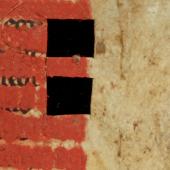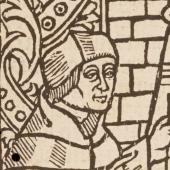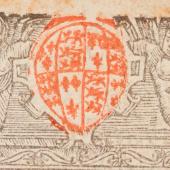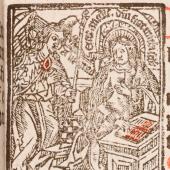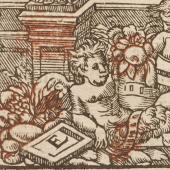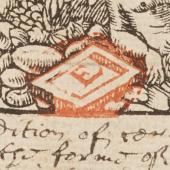Masking with the frisket sheet
Tudor colour printing
Histories of colour printmaking hold that all colour prints before c.1690 were made with different matrices for each colour of ink. However, new research shows that by far the most common technique for colour printing throughout the early modern period involved superimposing multiple impressions of one block on itself, each in a different colour of ink, and was used only for visual elements in books. Frisket sheets (masks that protect unprinted areas of a sheet in the printing press and fit in the part of the printing press called the ‘frisket’) were cut for each colour to determine which areas would be in red, which in black, and which in both red and black. Because they are made in the printing process, not the design process, a key aspect of these prints’ visual effect was determined by the printer rather than the artist. This approach, here called masking, seems to have first appeared in 1490 and to have been used across Europe from c.1510. It flourished even in countries where colour printmaking is thought to have been introduced up to 250 years later, after technological advances allowed the mass production of colour-printed images in the mid-1700s.
